Usb travel charger 1A
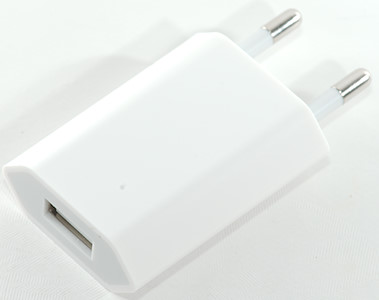
Official specifications:
-
Input: 100-240VAC
-
Output: 5V 1000mA
I got it from a Ebay dealer: ibo_store with help from a reader.
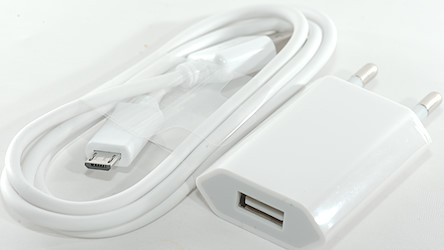
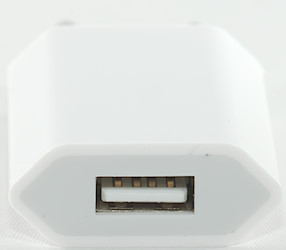
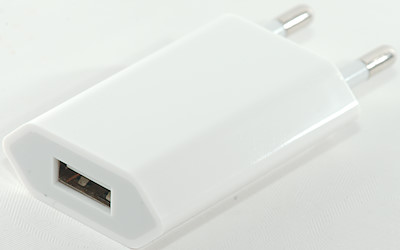
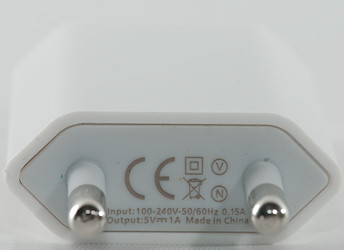
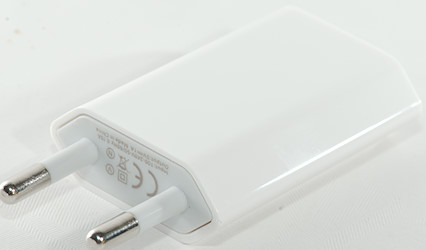
Measurements
-
Power consumption when idle is 0.13 watt
-
USB output is coded as Apple 2.1A
-
Weight: 19.2g
-
Size: 66.7 x 35 x 14.2mm
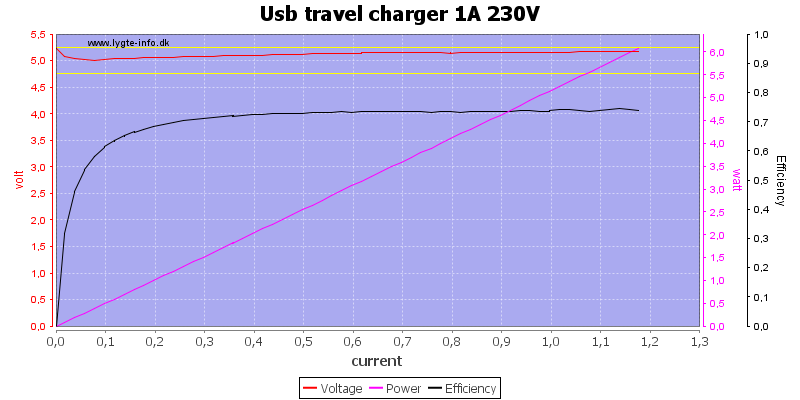
The charger can deliver about 1.26A before overload protection trips, this is fine.
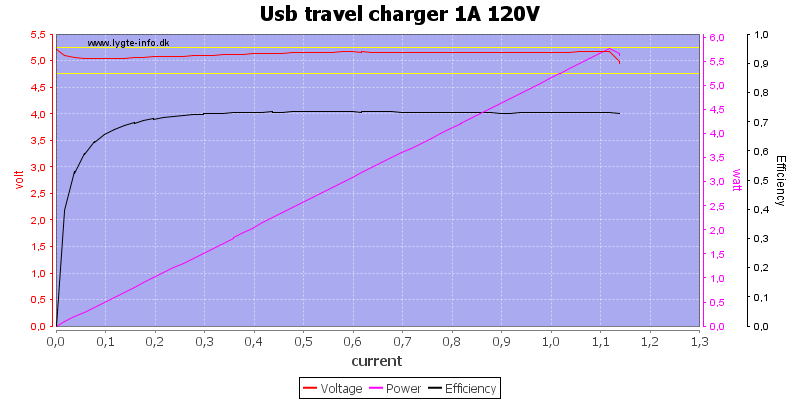
The current is slightly lower at 120VAC.
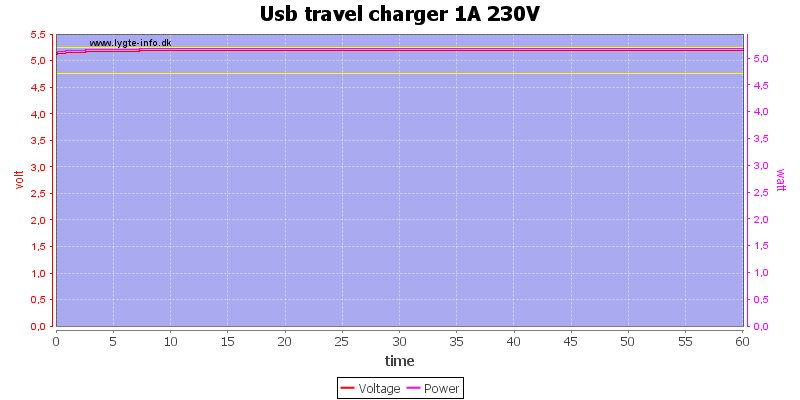
No problems running one hour at 1A.
The temperature photos below are taken between 30 minutes and 60 minutes into the one hour test.
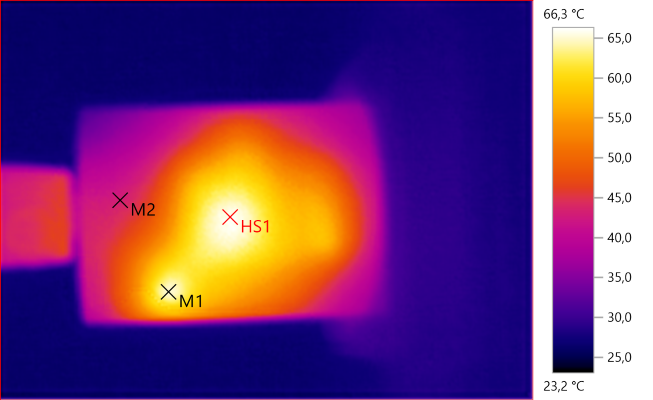
M1: 65,0°C, M2: 43,4°C, HS1: 66,3°C
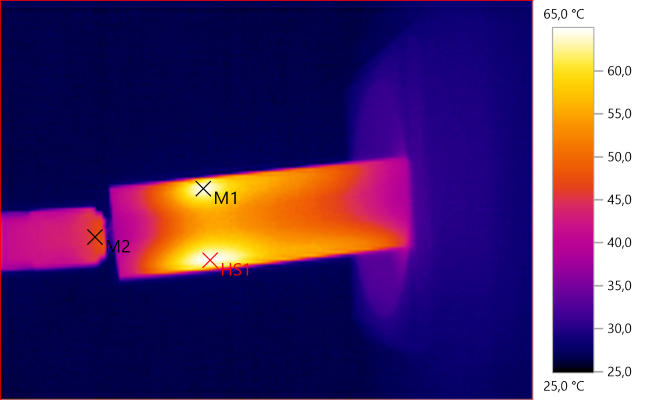
M1: 64,9°C, M2: 46,5°C, HS1: 65,0°C
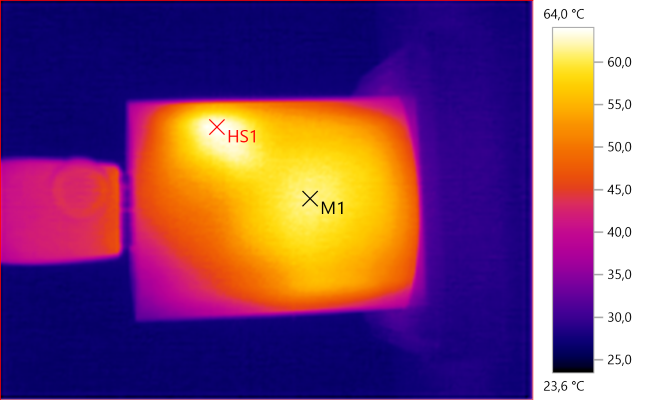
M1: 61,3°C, HS1: 64,0°C

M1: 50,6°C, HS1: 53,9°C
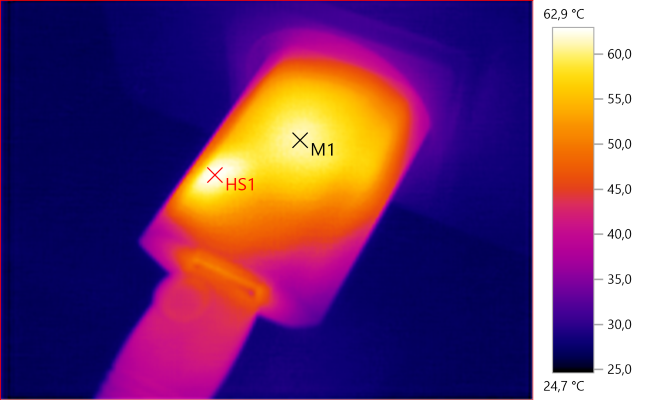
M1: 60,9°C, HS1: 62,9°C

At 0.5A the noise is 87mV rms and 935mVpp.

At 1A the noise is 115mV rms and 1068mVpp, this is a rather high noise.
Tear down
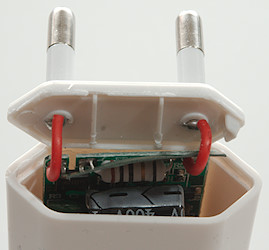
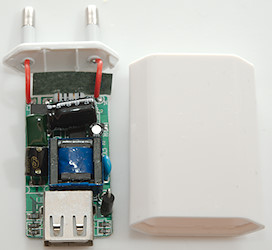
This adapter was easy to open, I did not need any tools, I just had to break the pins a bit and it popped open.
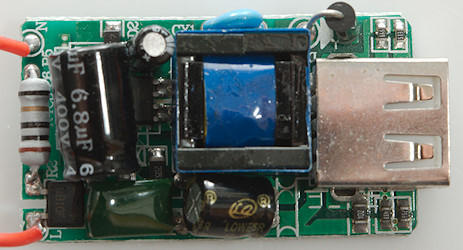
Fairly compact construction. At the mains input is a fusible resistor and a bridge rectifier. The mains switchers is below the 6.8uF black capacitor. Besides the transformer is a “safety” capacitor and beside the usb connector is a rectifier diode and some resistors for coding.
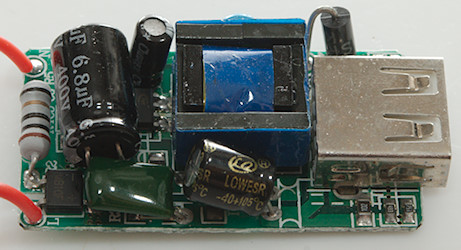
The bridge rectifier is close to the mains input “L”
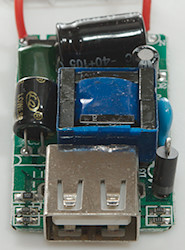
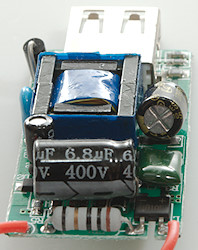
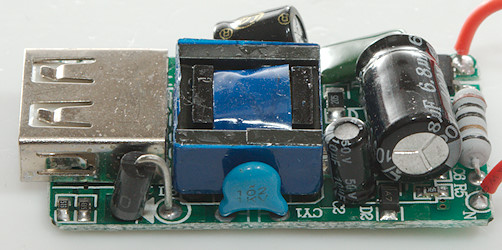
The blue capacitor is not a safety capacitor, but just a regular 1kV capacitor, this is not acceptable or safe.
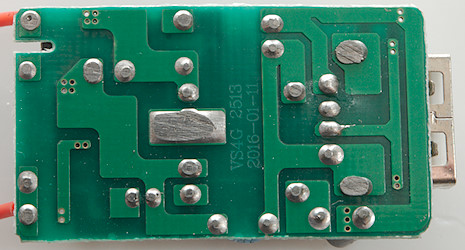
No parts on this side.
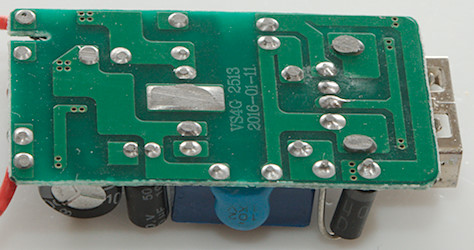
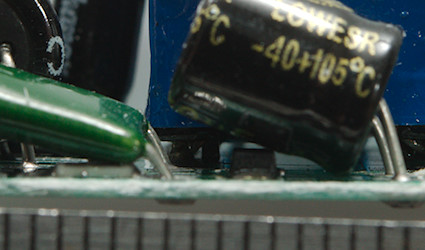
Distance between mains and low volt side must be 4mm through air, this is not the case between the black and green capacitor. Some yellow tape around the black capacitor could have fixed that.
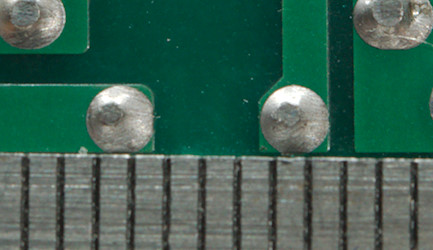
On the circuit board the distance must be 6.4mm and here it is 3mm, not good enough.
Testing with 2830 volt and 4242 volt between mains and low volt side, did not show any safety problems.
Conclusion
This charger is made to look like an Apple model, but the performance and safety is not very good
Notes
Index of all tested USB power supplies/chargers
Read more about how I test USB power supplies/charger
How does a usb charger work?